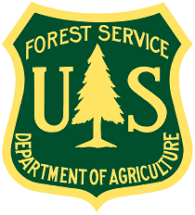Fire Behavior
In 2024, there were five Thursdays in February. To celebrate this rare event, the Fire Lab is hosting a series of five seminars that highlight new tools and research for managers. The “February Five” will occur during our regularly scheduled seminar series timeslot – Thursdays at 11am Mountain Time. Please join us on Teams. Select the titles below for connection information and to view recordings after the event.
FastFuels and QUIC-Fire: 3D fuel and fire modeling systems supporting prescribed fire
Feb 1, 2024: Russell Parsons, Research Ecologist
The Fire Weather Alert System
Feb 8, 2024: Jason Forthofer, Research Mechanical Engineer; Natalie Wagenbrenner, Research Meteorologist
Estimating forest characteristics such as carbon and tree growth over space and time using TreeMap, FIADB, and FVS
Feb 15, 2024: Karin Riley, Research Ecologist and John Shaw, Forest Inventory and Analysis
Behave7 Fire Modeling System: A Long Time Coming
Feb 22, 2024: Faith Ann Heinsch, Physical Scientist; LaWen Hollingsworth, Fire Behavior Specialist; Greg Dillon, Director, Fire Modeling Institute
Wildfire risk and mitigation opportunities in the US sagebrush biome
Feb 29, 2024: Karen Short, Research Ecologist
Webinar recording.
The complex interactions between atmospheric and fire-induced winds are a persistent obstacle to accurately predicting wildfire front behavior. There are a multitude of wildfire spread models, with one primary distinction being the level of fire-atmosphere coupling in each. Coupling of fire-induced winds and ambient winds in numerical models is carried out through linking the heat and mass fluxes from the wildfire with the surface energy fluxes in the atmospheric model. The challenge in this coupling is increased with the introduction of heterogenous surface conditions, e.g., terrain, canopies, buildings. To better understand the dynamic coupling of fire-induced winds and atmospheric winds at microscales, the fast-response wildfire model QES-Fire was used to study the effects of fire-induced winds near structures, and the relative importance of the momentum deficits caused by canopies and structures on fire-induced winds.
View article.
While prescribed fire and mechanical treatments in shrublands experiencing tree expansion restored understory vegetation and prevented continued juniper and pinyon infilling and growth, these fuel treatments also increased modeled surface fire behavior. Thus, management tradeoffs occur between desired future vegetation and wildfire risk after fuel treatments.
View video.
The story of how fire managers slowed a fire and benefited the ecosystem. This was accomplished thanks to previous fires that were managed for resource benefit. This is the story of the 2021 Rafael Fire that started just 20 miles outside of Flagstaff, AZ. On day 2 the fire ran 12 miles towards town, causing evacuations and worry. Things changed on day 3, watch the video to learn more. This video contains beautiful drone footage of unhealthy forests and the benefits of fire. Thanks to a shift in fire management, a bad situation was transformed into a beneficial one.
Webinar recording.
Fires of Unusual Size (FOUS) are large fires that exhibit at least one rapid growth event, and keep growing after that. While “megafire” is widely used and has no specific definition, FOUS are defined by specific characteristics. We can count how many happen each year, and we can ask scientific questions about how they differ from other fires. What makes them so big? What triggered the big growth event(s)? Are they increasing each year? Brian Potter, Research Meteorologist with the Pacific Northwest Research Station, will talk about the trends, look at how weather influences their growth, and give some examples of unanswered questions about them.
Webinar recording.
In an effort to address key capability gaps, the NOAA National Environmental Satellite, Data, and Information Service (NESDIS) has established a Wildland Fire Program focused on impactful service delivery. NESDIS Wildland Fire Program projects, aimed at addressing critical active fire capability gaps, are underway, with product and service demonstrations expected to begin by July 2023. The improved products are generated using the Next Generation Fire System (NGFS), which consists of a sensor agnostic (applicable to geostationary or low earth orbit satellites) active fire algorithm and higher order capabilities, including alerting, incident situational awareness tools that are highly tolerant of cloud cover, and an event-based data model that combines time-resolved satellite fire detections with complementary geospatial data layers. Terrain corrected GOES-R ABI imagery and fire detections have also been developed. In addition, a lightning prediction model, customized for incident management, is under development. With Alaska wildland fire applications in mind, this presentation will introduce the NESDIS Wildland Fire Program, highlight product development and demonstration activities, and facilitate continued dialogue with stakeholders.
Webinar recording.
This webinar will provide an overview of the major changes in CO-WRA, including modification of Scott and Burgan (2005) standard fire behavior fuel models to better reflect fuel types in Colorado, incorporating LiDAR to produce higher spatial resolution data products, and advanced wildland-urban interface risk analysis. Presenters will explain how these datasets and information can be used to: (1) increase public awareness about wildfire risk; (2) support wildfire risk reduction efforts, decision-making, and research from state to local scales; (3) identify high priority areas; (4) assist in the development of Community Wildfire Protection Plans (CWPPs) and other hazard mitigation plans; and (5) complement forest stewardship and forest management plans.
After a brief review, presenters will explore discussions and questions from participants to address technical issues.
View synthesis.
This paper provides a synthesis of the key laboratory- and field-based observational studies focused on wildland fire and atmospheric turbulence connections that have been conducted from the early 1900s through 2021. Included in the synthesis are reports of anecdotal turbulence observations, direct measurements of ambient and fire-induced turbulent flow in laboratory and wildland environments, and remote sensing measurements of fire-induced turbulent plume dynamics. Although considerable progress has been made in advancing our understanding of the connections between atmospheric turbulence and wildland fire behavior and smoke dispersion, gaps in that understanding still exist and are discussed to conclude the synthesis.
View article.
Vegetation and substrate burn severity was characterized as moderate across the study site and did not differ among treatments. Contrasting with higher pre-fire shrub density in the mastication + burning treatment, 2-year post-fire live shrub density did not differ among treatments. Higher pre-fire fine woody fuel loading in the mastication treatment did not correspond to post-fire fuel loading among treatments, while the hand thinned treatment was the only treatment where fine fuel loading was not significantly reduced post-fire. Total plant species richness increased in all treatment types following wildfire, largely driven by an increase in exotic species. Native cover decreased, and exotic cover increased in oak and chaparral types, but greater exotic species cover in the mastication + burning treatment in chaparral was maintained following wildfire.





